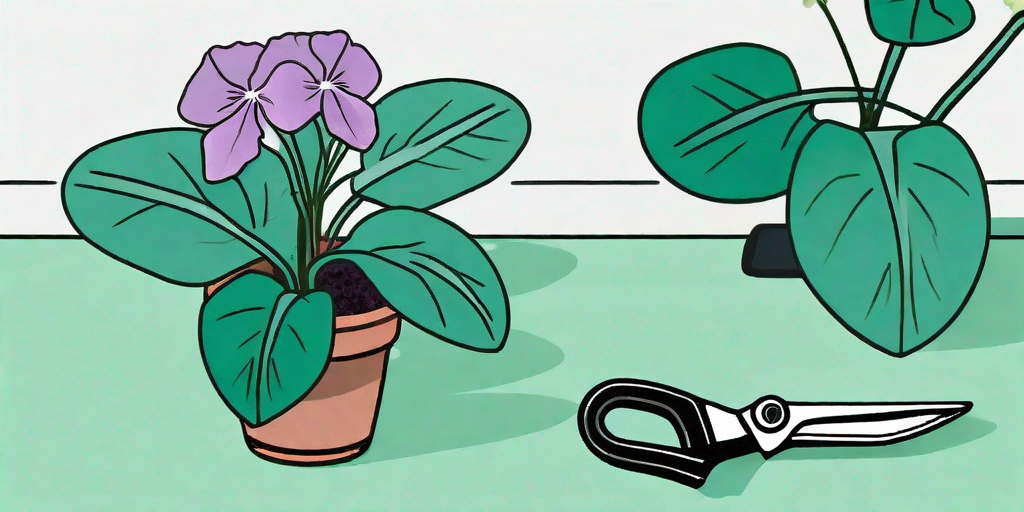
African Violets, or Saintpaulias if you want to get all botanical about it, are a popular choice for indoor plants. They're like the divas of the plant world - beautiful to look at, but require a bit of extra care to keep them looking their best. One of the key aspects of African Violet care is proper pruning. But don't worry, it's not as scary as it sounds. With a bit of knowledge and a steady hand, you'll have your African Violets looking like they're ready for their close-up in no time.
Why Prune Your African Violets?
First of all, let's address the elephant in the room - why bother pruning your African Violets? Well, just like a pop star needs a good manager to keep them in check, your African Violets need you to guide their growth. Pruning helps to keep your plants healthy, encourages blooming, and maintains a neat and tidy appearance. It's like giving your plants a little spa day - who wouldn't want that?
Pruning also helps to prevent your African Violets from becoming too leggy. No, we're not talking about supermodel legs here. In plant terms, 'leggy' refers to plants that have grown too tall with sparse leaves, often as a result of inadequate light. By pruning your African Violets, you can help to ensure a compact, bushy growth that's more 'Beyoncé' than 'beanpole'.
The Right Tools for the Job
Before you start hacking away at your beloved African Violets, make sure you have the right tools for the job. A pair of sharp, clean pruning shears or scissors is essential. Dull or dirty tools can damage your plants and introduce disease, which is about as welcome as a skunk at a garden party.
It's also a good idea to have a pair of tweezers on hand for removing dead or dying leaves. This might seem like overkill, but trust us, your African Violets will thank you for it. And remember, always clean your tools before and after use to keep them in tip-top condition.
How to Prune Your African Violets
Step 1: Identify What Needs to be Pruned
Before you start snipping, take a moment to assess your African Violets. Look for any dead or dying leaves, flowers that have finished blooming, and any stems that are growing out of shape. These are all prime candidates for pruning. Remember, pruning is not about punishing your plants, it's about helping them to be the best they can be.
Step 2: Make the Cut
When you're ready to make the cut, do so at a 45-degree angle. This helps to promote new growth and makes your African Violets look more aesthetically pleasing. It's like giving your plants a stylish new haircut - just make sure it's more 'pixie cut' than 'mullet'.
Step 3: Clean Up
After you've finished pruning, make sure to clean up any fallen leaves or flowers. These can attract pests and disease, which is about as desirable as a mosquito at a nudist colony. So, keep your plants' environment clean and they'll reward you with healthy growth and beautiful blooms.
Common Pruning Mistakes to Avoid
Like any skill, pruning takes practice. But there are a few common mistakes that can turn your pruning session into a horror show. The first is over-pruning. Remember, less is more when it comes to pruning. You're aiming for a trim, not a buzz cut.
Another common mistake is pruning at the wrong time. The best time to prune your African Violets is in the early spring or late winter, when they're about to enter their growth phase. Pruning at other times can stress your plants and reduce their blooming potential.
FAQs
How often should I prune my African Violets?
As a general rule, you should prune your African Violets once or twice a year. However, you should also remove any dead or dying leaves as soon as you notice them to keep your plants healthy.
Can I propagate the cuttings from my African Violets?
Absolutely! African Violets are very easy to propagate from leaf cuttings. Just make sure the leaf you're using is healthy and not too old. It's like cloning your favorite pop star - but with less drama and more flowers.
What should I do if my African Violets still look leggy after pruning?
If your African Violets still look leggy after pruning, they may not be getting enough light. Try moving them to a brighter location, but avoid direct sunlight as this can scorch their leaves.
Conclusion
Pruning your African Violets may seem like a daunting task, but with a bit of knowledge and practice, it can become a rewarding part of your plant care routine. So, grab your pruning shears and give your African Violets the care they deserve. After all, they're not just plants, they're divas.















